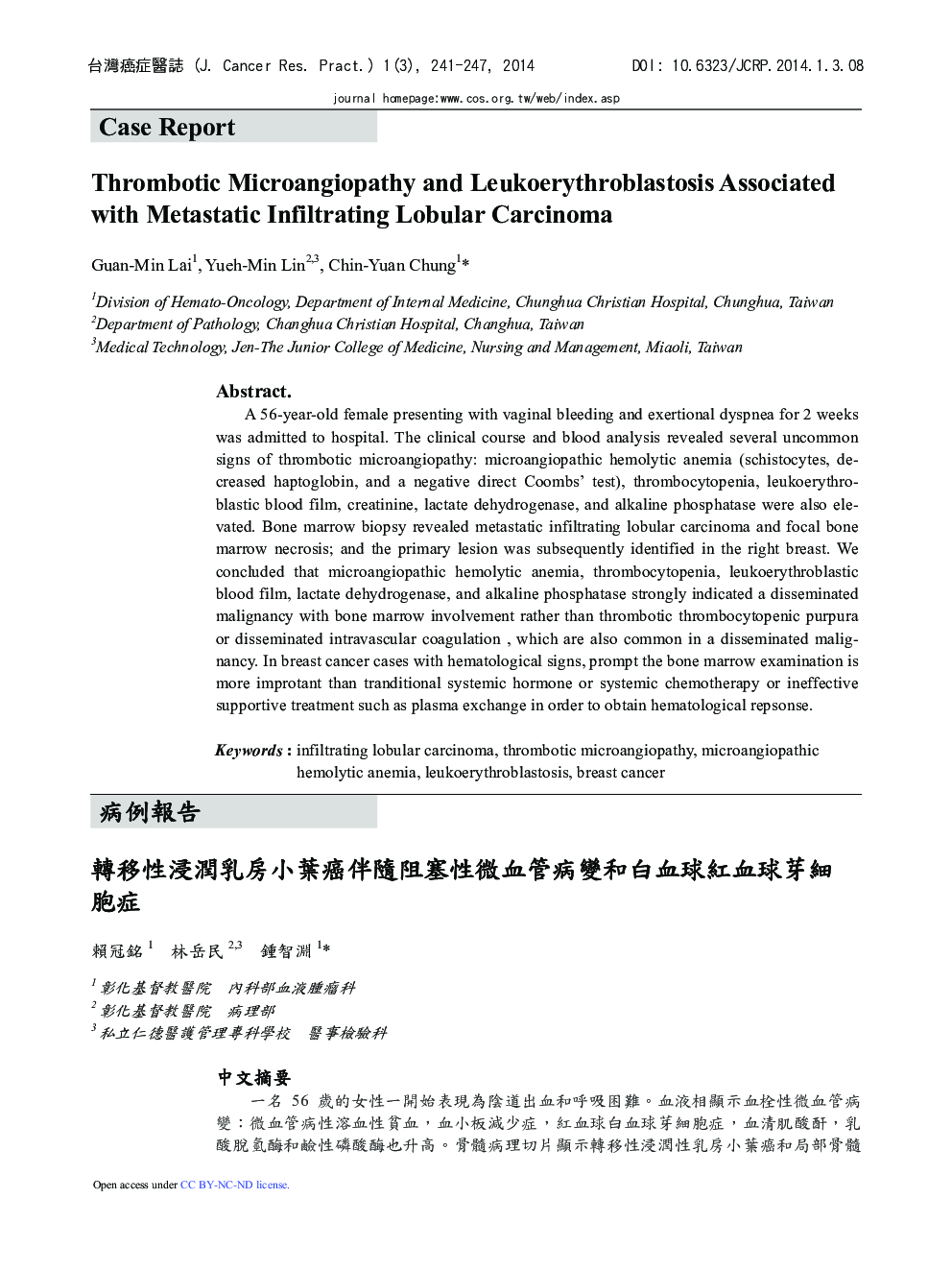| Article ID | Journal | Published Year | Pages | File Type |
|---|---|---|---|---|
| 3988829 | Journal of Cancer Research and Practice | 2014 | 7 Pages |
A 56-year-old female presenting with vaginal bleeding and exertional dyspnea for 2 weeks was admitted to hospital. The clinical course and blood analysis revealed several uncommon signs of thrombotic microangiopathy: microangiopathic hemolytic anemia (schistocytes, decreased haptoglobin, and a negative direct Coombs’ test), thrombocytopenia, leukoerythroblastic blood film, creatinine, lactate dehydrogenase, and alkaline phosphatase were also elevated. Bone marrow biopsy revealed metastatic infiltrating lobular carcinoma and focal bone marrow necrosis; and the primary lesion was subsequently identified in the right breast. We concluded that microangiopathic hemolytic anemia, thrombocytopenia, leukoerythroblastic blood film, lactate dehydrogenase, and alkaline phosphatase strongly indicated a disseminated malignancy with bone marrow involvement rather than thrombotic thrombocytopenic purpura or disseminated intravascular coagulation, which are also common in a disseminated malignancy. In breast cancer cases with hematological signs, prompt the bone marrow examination is more improtant than tranditional systemic hormone or systemic chemotherapy or ineffective supportive treatment such as plasma exchange in order to obtain hematological repsonse.
